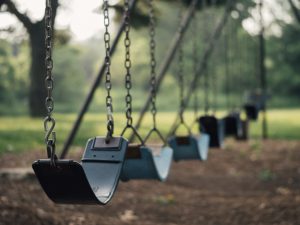 School’s out. Days are long. The sun is shining and playgrounds are packed. Competing for kids’ attention—up against the alluring tech available today—isn’t an easy task, but it’s one parents continue to fight. The replacement of choice: the playground. A reliable source of entertainment for decades, families escape from the tablets, TVs, and smartphones for a few hours of outdoor experience. Of course these fun, happy, care-free parks aren’t all fun and games; there are risks that shouldn’t be ignored.
School’s out. Days are long. The sun is shining and playgrounds are packed. Competing for kids’ attention—up against the alluring tech available today—isn’t an easy task, but it’s one parents continue to fight. The replacement of choice: the playground. A reliable source of entertainment for decades, families escape from the tablets, TVs, and smartphones for a few hours of outdoor experience. Of course these fun, happy, care-free parks aren’t all fun and games; there are risks that shouldn’t be ignored.
Outside play is an important part of a child’s physical, emotional, social development, but safety is still first. Of the playground injuries reported by emergency rooms, 51% happened on public playground equipment. The biggest culprits? Climbers, swings, and slides. The most common injuries are what you’d expect: fractures, contusions, and cuts, but there’s another danger that’s hard to see: burns.
The summer brings on temperatures into the 90’s and above, heating up equipment to temperatures well above that of the thermostat. Hot equipment (railings, handles, and slides) can cause second degree burns or increase falls due to letting go, especially in young kids whose skin is more delicate.
In Tennessee, a 14-month-old’s hands were blistered from second-degree burns after heading down a plastic slide. The mother ascribes her son’s injuries to the lack of any warning signs—an invisible threat.
How can you keep your playground safe?
Signage. It may seem obvious that equipment would get hot, but the extreme heat is not as obvious. Like ice on a bridge, the hot surfaces can be a silent danger. A simple sign can go a long way in warning adults of the risk and raising awareness.
Additionally, it’s important to keep your playground maintained by replacing faulty sections, repairing broken equipment, upgrading materials, and encouraging supervision while kids are at play.
Installing a playground? Here’s a list of helpful resources.




